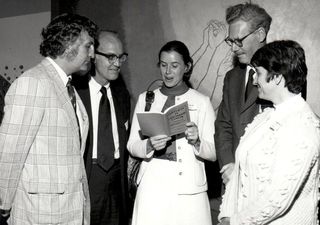Health
Cancer Research Stands at Another Cossroads
Conflicting signs from The White House as a pivotal clinical trial begins
Posted April 3, 2019
Thanks to recent medical advances and a landmark clinical trial being readied by the Leukemia & Lymphoma Society, we appear to be closer than ever to curing childhood cancer. That’s what makes President Trump’s recent moves so perplexing and potentially devastating.
In his State of the Union address, Trump called for a $50 million increase in pediatric cancer research. This would be the first step in investing $500 million over the next 10 years in the field and was welcomed by those in the field. Yet in his 2018 budget, Trump proposed cutting $6 billion from the National Institutes of Health and $1 billion from the National Cancer Institute (NCI). Experts warn that cancer research is so intertwined that such cuts could have an adverse effect.
That’s the backdrop as the Leukemia & Lymphoma Society (LLS) begins a multi-pronged children’s initiative, including a clinical trial, with as many as 200 hospitals worldwide. The LLS has set a goal of raising $50 million to support the trial, increased research investment in pediatric cancer research and financial and support services for children and their families. The effort is reminiscent of a half-century ago when a small group of doctors and nurses teamed with the NCI to put the majority of kids suffering from acute lymphoblastic leukemia (ALL) in remission. Those clinical trials are considered to be the first “cancer moonshot.”

In the early 1960s, the Acute Leukemia Group B ranked as the leading cancer research organization in the country. This medical cooperative included many of the top doctors in the field — Donald Pinkel, Emil Frei, Jerry Yates, Lucius Sinks — and was led by James Holland. Early on, Holland received the backing of C. Gordon Zubrod, who headed the Division of Cancer Treatment at the NCI. That resulted in a $5 million congressional grant to further the study of chemotherapy.
At Zubrod’s urging, the members of Holland’s group not only stayed in regular contact but broadened its research, deploying many of the new drugs made available by the NCI. This renegade group of doctors, nicknamed the “Cancer Cowboys” because many in the field disagreed with such methods, soon realized that such cancer drugs could be better utilized in combinations – two, three, or four at a time.
“One drug couldn’t destroy all the cancer cells. There was no magic bullet,” says Sinks, who was director of pediatrics at the Roswell Park Cancer Center in Buffalo at the time. “That was a very fundamental insight for us. We had to consider everything at our disposal. That’s the only way with cancer.”
In doing so, the Cancer Cowboys took ALL from a 10 percent survival rate to the 90 percent cure rate it has today. The close relationship with the NCI and other national agencies proved to be crucial.
A generation later, we find ourselves at similar crossroads, wondering how many partners will be able to fully participate and if short-sighted budget cutbacks will stymie the hope for real progress.


